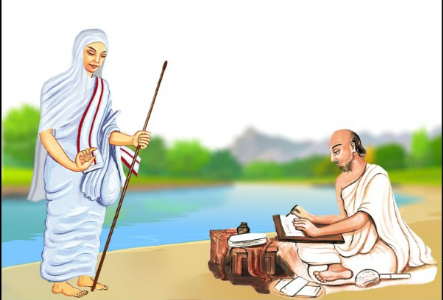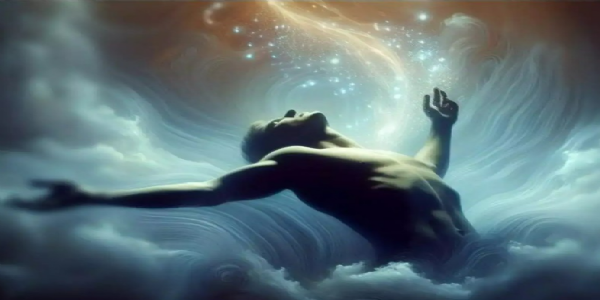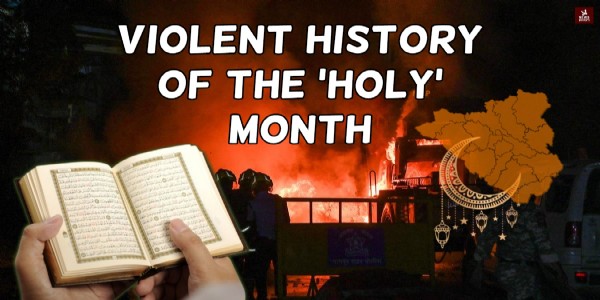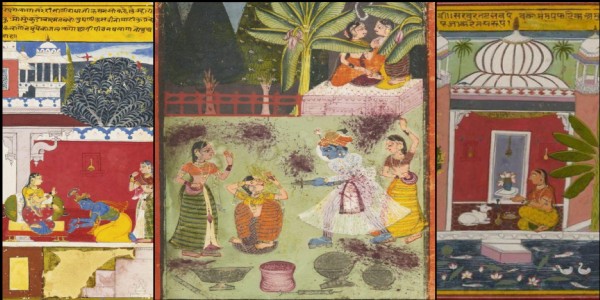Vedas & Binary Code: Power of EVERYTHING comes from power of NOTHING
Is Nothing good? Or not? How can Everything come from Nothing?
Total Views | 309
"THE POWER OF EVERYTHING COMES FROM THE POWER OF NOTHING"
A popular Hollywood song went something like this, “Nothing comes from nothing, nothing ever could…”
But, at the end of this article you may want to sing, “Everything comes from Nothing, Nothing is really good…”
Mystified?
Is Nothing good? Or not? How can Everything come from Nothing?
Look around you: the entire world today is empowered, exhilarating, and hurtling rapidly in Time.
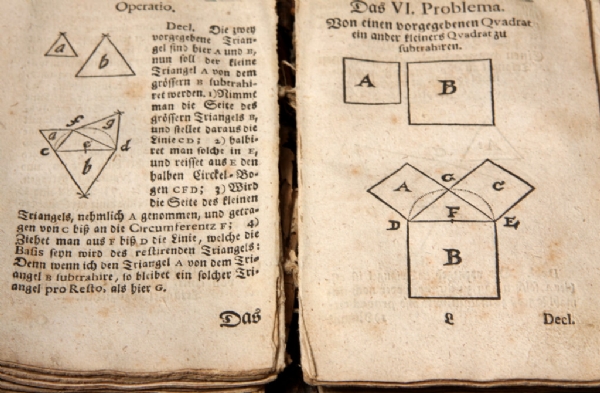
We travel all the time, we watch movies at home or in multiplexes, we order food to be delivered home, we communicate with friends worldwide at the drop of a hat, we see them in video chats in real time, we carry out financial transactions online, we read online- the list is endless and has become much longer since we learned how to cope with being housebound.
How did this all come about?
You reply, why of course, it was the computer and software which evolved to this advanced stage that made it all possible.
And I would agree, yes of course, that’s how it happened.
But then, how do computers and their software work? What is the essential key to all this magical function? Across nations speaking different languages, and cultures with different educational backgrounds?
And the young among you would giggle or snigger at this old person, and say, of course it’s all because of an invention of a code of 2 numbers, 1 and 0 combined in zillion combinations that it can happen- a binary code, the invention of which is a subject of much debate.
Now it’s MY turn to laugh, and say,
BUT
Where did they get the zero from?
Do you know if not for ancient India and Vedic mathematicians there would be
NO ZERO
NO BINARY CODE
NO SOFTWARE
NO COMPUTER
NO DIGITAL FUNCTIONS
NO AVIATION
NO BANKING
NO HOLIDAYS
NO DINING OUT
NO ENTERTAINMENT
NO MODERN DAY LIFE AS WE KNOW IT.
ALL
Because, the brilliance of ancient Indian mathematicians has brought us where we are today.
And no, you don’t have to take MY word for it; I’m no historian, or archaeologist, or mathematician.
I’m only a curious scientist who decided to explore reference materials to understand where I as an Indian came from, and as Indians, what have we meant to the world.
It all began aeons ago, the exact period is only now emerging from exquisite scientific research.
More of that later, when I shall cover the origins of the ancient Indian or Vedic culture.
And the other contributions of Vedic knowledge to the world as we know it even today.
“…. Many of the inventions we enjoy today are because of the developments that took place in ancient India.”
The reference here is of “Advancements of ancient India’s Vedic culture: The planet’s earliest civilization and how it influenced the world”, Stephen Knapp, 2012. Publ: The World Relief Network, page 54
Coming back to Vedic mathematics
Who were these people who created zero? And why?
Counting is a need when something is stored, or exchanged or traded. How many bananas? How many fish? How many sacks of grain?
The easiest way would be to make a display and check it off on the fingers of a hand, and then devise a way to do so repeatedly. How then can we make some form of record of what is stored or traded? For a master perhaps?
So a symbol was created. These symbols were created across the globe in different civilizations that we know of, Egyptian, Greek, Roman, Arabic and so on.
When the Egyptians wanted to write a large number they had to note down 20 to 30 symbols- difficult to imagine and understand today right ?
“ The numerals script from India is one of the greatest contributions (of Vedic Culture) to the world……
For the number 986 they (the ancient Egyptians) had to use 23 symbols…..”
The reference here is of “Advancements of ancient India’s Vedic culture: The planet’s earliest civilisation and how it influenced the world.”, Stephen Knapp, 2012. Publ: The World Relief Network, page 53.
The difficulty is further increased considering that all records in ancient Egypt were kept on large clay tablets engraved with words. Sometimes these tablets broke, and records were lost.
Did any other culture fare better?
Graeco-Roman also used symbols, visible even today on clock faces and as numbering of traditional items. They used alphabets like I, V, M, X , C and L, and combinations of these to represent numbers. But still, it was a bulky system, and they could not arrive at a simple system
Ancient India traded with ancient Arabia using the land routes, and sea routes, and cultural exchange began; trade required number systems, and the Indians taught the Arabs their own systems. The Arabs also traded with European nations and the system travelled from the Arabs to Europe.
It’s very frustrating to know that for centuries the Europeans called OUR Vedic system of numerals as Arabic numerals, while the Arabs themselves called it HINDISAT or Hindu ART.
Strangely enough, the role of the Arabs goes a bit further in understanding the unknown and incredible contribution to today’s computer terminology.
The earliest form of decimal numerals originated in The Indus valley civilization circa 2000 BCE from what are called the Brahmi numerals.
The brilliant Vedic mathematician Brahmagupta in 628 CE had written a book on mathematics in Sanskrit; this was meticulously translated into Arabic, by al Fazari and an unknown Indian scholar, and this translation was read by Al-Khwarizmi, inspiring him to write a book for European scholars, called De Numero Indorum or “The Indian Art of Reckoning” ( calculation). In this book he gave a full account of the Vedic numerals which was the first to expound the system with its digits of 0,1,2,3,4,5,6,7,8,9 and the decimal place value which was a fairly recent arrival from India.
“The new notation came to be known as that of Al- Khwarizmi, or more carelessly, algorismi; ultimately the scheme of making of numeration making use of the Vedic numerals came to be called algorism or algorithm, a word that derived from the name of al-Khwarizmi ( who had only taken it from Brahmagupta’s translated works). This now means any peculiar rule of procedure or operation”
The reference here is of 'Ibid', page 54.
How cool is that?
Modern computer terminology for any new (mathematical or binary ) procedure or operation directly traceable to an Arabic author who popularised Vedic numeral system, and lent his name to a simplified version of his name to describe the Vedic numeral system.
The practice of trade and barter evolved to commercial success and better standards of living: moving from a small simple cottage to a bigger home with additional stores, a small cooking area, and so on. The need for reliable measurement of areas, and heights of structures arose.
Geometry is today taken for granted as the base mathematics for all architecture and engineering. Was it always so?
It was from ancient India that geometric instruments probably spread far and wide to the rest of Her trading nations.
“…….. India was indeed the centre for most civilizational development of the time. One example is that recent evidence of geometrical drawing instruments from as early as 2500 BCE have been found in the Indus Valley. Weights and scales with decimal divisions have been found from that early period, all of which are still quite accurate.”
The reference here is of 'Ibid', page 55.
According to reports, “Also of great interest is a remarkably accurate decimal ruler known as the Mohenjodaro ruler. Subdivisions on the ruler have a maximum error of just 0.005 inches and, at a length of 1.32 inches, have been named the Indus inch. Furthermore, a correspondence has been noted between the Indus scale and brick size. Bricks (found in various locations) were found to have dimensions that were integral multiples of the graduations of their respective scales, which suggests advanced mathematical thinking.”…..
“The origins of geometry have been very clearly traced to thousands of years BC. It has been proven that one of the Vedic experts Baudhyayana, lived around 3200 BCE.”
“It was the Shulba Sutras that recorded the basis of these geometric formulas used for the Vedic temples and altars. …… how to make a square of the same area as that of a triangle, a circle of the same area as that of a square, …. Bhaskaracharya’s Lilavati tells us that an arm of an equal tetragon, pentagon, hexagon, octagon in a circle, is in definite proportions to the diameter of the circle.”
“The Shulba Sutras form part of the Vedangas …. The most important texts are of Baudhyayana, Apastamba and Katyayana…”
“The name Shulba Sutras” meant “codes of rope”…. Because calculations were used for measuring precise distances from altars and temple structures by using lengths of rope.”
“…what became known as the Pythagorean theorem was already existing in the Baudhyayana, the earliest of the Shulba Sutras. This was presented by Pythagoras around 540 BCE after he discovered it in, what some say, his travels to India.”
“In 1978, Dr. Abraham Seidenberg, a professor of mathematics at the University of California in Berkeley, as noted in a paper called The Origin of Mathematics (p. 301, 1978(, mentioned….. Old Babylonia (1700 BC) got the theorem of Pythagoras from India….”
“in this paper, Seidenberg established that the Shulba Sutras were the basis for the mathematics in Egypt, Babylon, and Greece…… preceded the mathematics of both Old Babylonia (c. 1900-1750 BCE) and of the Egyptian Middle Kingdom (c. 2100-1800 BCE).”
“Indian mathematicians continued creating systems that were not known in Europe until much later in the Renaissance period, ….Aryabhata ..born in 476 CE …introduced sines and versed sines, and is credited as the inventor of algebra…. The calendar of India was based on the work of Aryabhata until the presence of the Gregorian calendar…… He also calculated the length of the year to be 365.258 days.”
“Brahmagupta wrote the Khanda-khadakya, a mathematical treatise, and “Kepler’s theory of parallax is a repeat of the Khanda-khadakya.”
Brahmagupta also described the law of gravity more than 500 years before Newton, He related that “all things fall to the earth by a law of nature, for it is the nature of the earth to attract and keep things.”
“The oldest known work in Sanskrit in Vedic mathematics and astronomy was written by Bhaskara I ( c. 600 – c. 680) “
The reference here is of “Advancements of ancient India’s Vedic culture: The planet’s earliest civilisation and how it influenced the world.”, Stephen Knapp, 2012. Publ: The World Relief Network, page 58 - 66.
The Poetry of Algebra
“ …… all of Bhaskara’s mathematical works were written in verse. His most charming book, Lilavati, written for his daughter , whose nickname was Lilavati (The beautiful), contains many interesting algebraic poems. Apparently beautiful Lilavati, following in her father’s footsteps, had a taste for higher mathematics.

Here is one poem from Lilavati:
A fifth part of a swarm of bees came to rest on the flower of Kadamba, a third on the flower of Silinda.
Three times the difference between these two numbers flew over a flower of Krutaja,
and one bee alone remained in the air, attracted by the perfume of a jasmine in bloom. Tell me, beautiful girl, how many bees were in the swarm?”
Solution : x = x/5 + x/3 + 3(x/3-x/5) + 1
ORIGINAL REF OF POEM:
Poem also quoted in AN ADVERTISEMENT BY IBM INDIA, 1973, “How India gave the world the logic of indeterminate equations”
“History owes a debt to three Indian mathematicians of 1500 years ago who developed Algebra to give meaning to the meaningless.”
This advertisement acknowledged the origins of Algebra from India that is Bharat. The world had been misled by the West, that Algebra came from the words Al Jabra i.e., from the Arabs.
Incidentally, it also demonstrates that women in ancient India had a deep interest in Mathematics !!!!
“ …. Mahavira (9th century, 815 CE) an Indian Jain mathematician who made great strides in the use of fractions, permutations and combinations, and figuring out how to divide one fraction by another. ….considered to have established Jainism ..”
Author’s note.: Mahavira was the well known Tirthankara Mahavir Jain worshipped by the Jain Community. His brilliance in mathematics is not well known .It may be noted that “Mahavira (599–527 BCE),(the 24th Tirthankara, founder of Jainism, and revered by the Jain community), is less well known but has some importance for the history of mathematics”……. (Ref.: The History of Mathematics 3rd Ed Wiley, 2013, Robert Cooke)
I erroneously attributed the contribution of Mahavira of the 9th Century to Mahavir Jain 24th Tirthankara previously; I thank Mr. Pradip Shah for pointing this out to me, and the error has been duly corrected, while being deeply regretted.
“…. Bhaskara II (12th century, 1114-1185), also called Bhaskaracharya … made progress in principles of calculus before Newton by 500 years. .. His greatest work was the Siddhanta Shiromani divided into four parts called Lilavati, Bijaganita, Grhahaganita on mathematics of the planets and Goladhyaya or astronomy.”
“Madhava was the famous Kerala mathematician …discovery of the sine and cosine functions as an infinite series was about 300 years before Newton …. This work made its first appearance in Europe in 1676 in a letter by Newton to the Secretary of the Royal Society…”
“Madhava also gave a more accurate value for pi … at 3.14159265359.”
The reference here is of “Advancements of ancient India’s Vedic culture: The planet’s earliest civilisation and how it influenced the world.”, Stephen Knapp, 2012. Publ: The World Relief Network, page 58 - 66.
The gifts that Bharat gave to the world are innumerable and unimaginable. Thus far we have only had a small glimpse of the impact of Bharat’s contributions in mathematics alone, which in turn have impacted every aspect of our daily life, albeit unbeknown to us all. The impact has been felt silently through research, engineering, space exploration, architecture, everywhere.
Architecture could develop very easily with the help of geometry. But we will come to this area of Vedic grandeur later.
Adieu for now reader. Until we meet again with more treasures from our Vedic forbears.
Author’s post script
As I said before, I am no historian, or archaeologist, or mathematician. I am a scientist with a deep and abiding love of our Ancient Civilisation and Culture, and an inexorable curiosity to learn more and more about it all my Life. Any errors or unwitting transgressions are mine and mine alone, and I hope to be excused for them.
Readers are welcome to comment on inaccuracies with peer reviewed proofs through email at the email address provided, and corrections will be published after due vetting by our team, and contributions acknowledged with thanks.
--
Bharati Web




